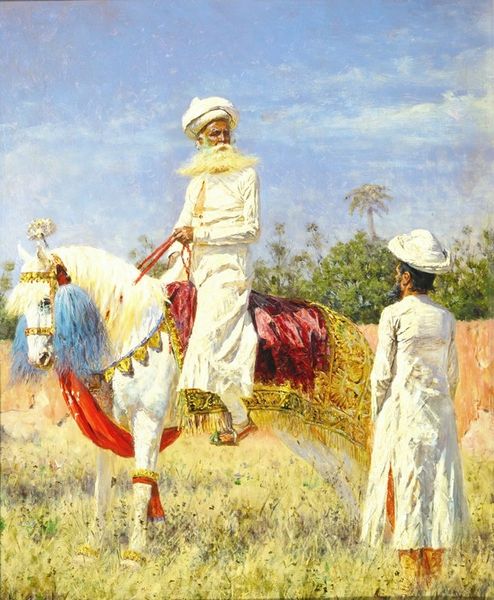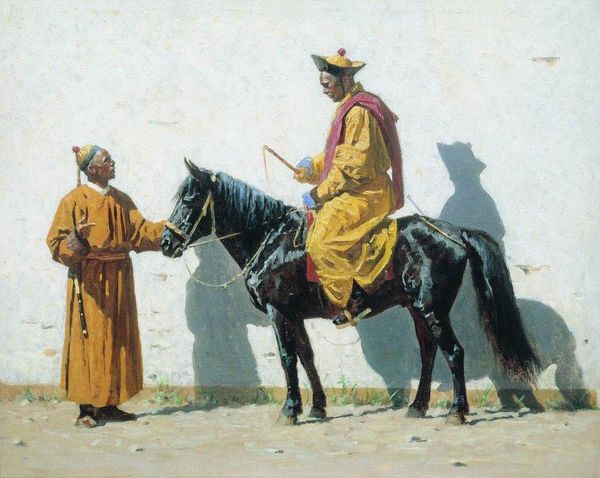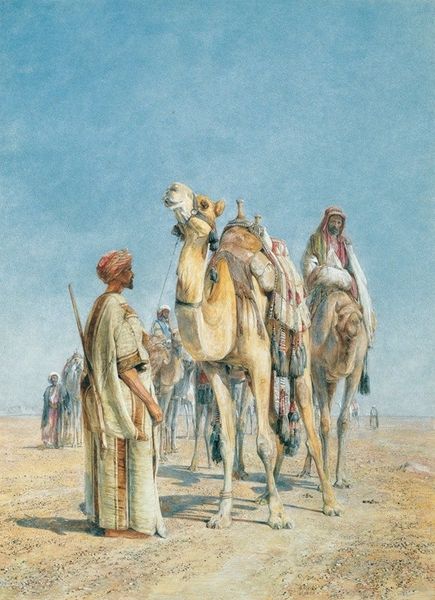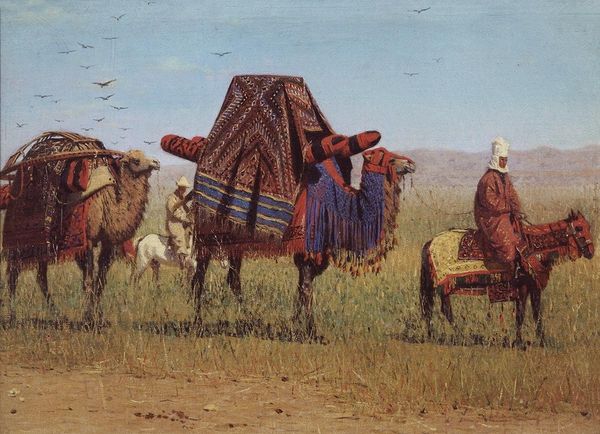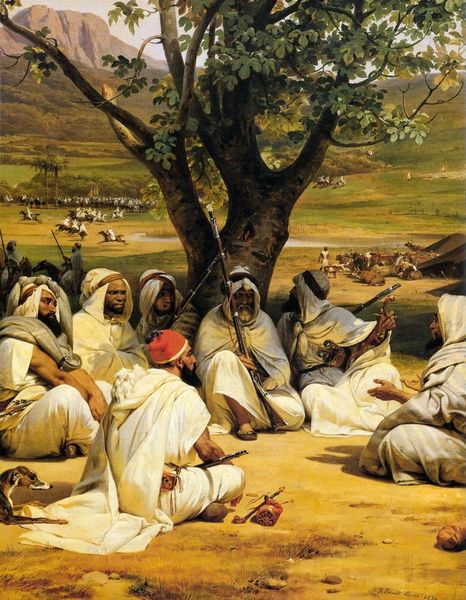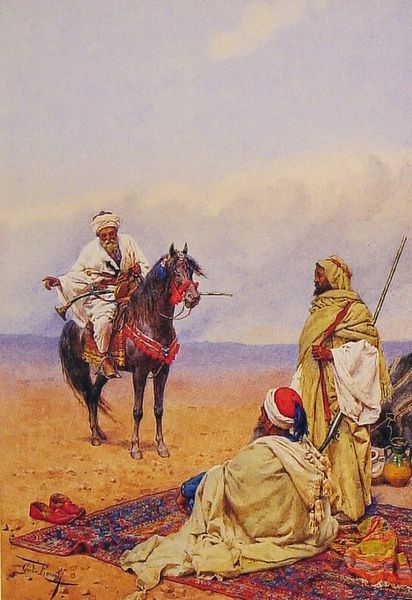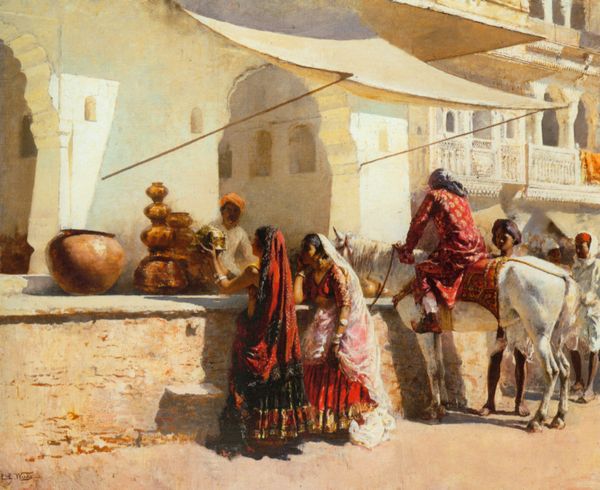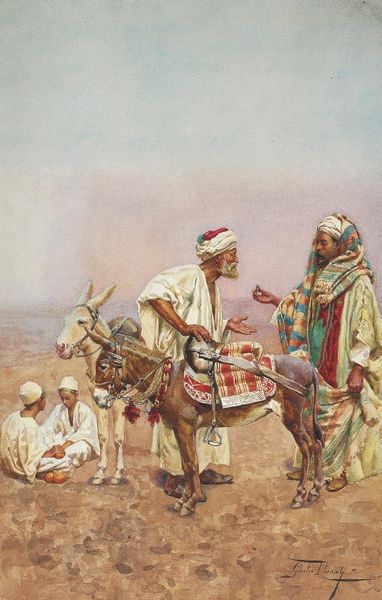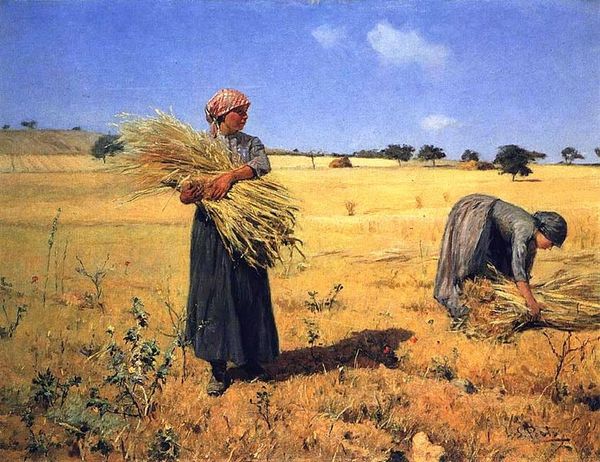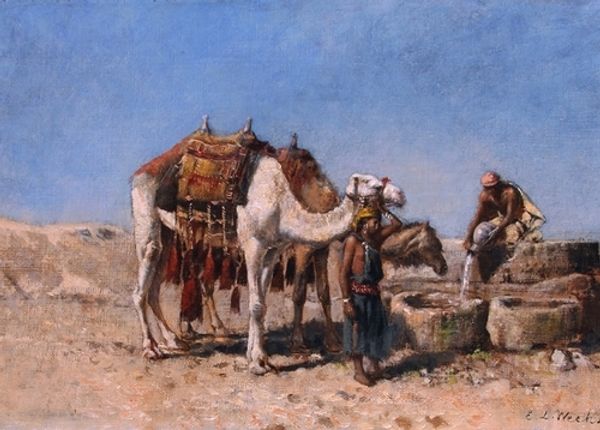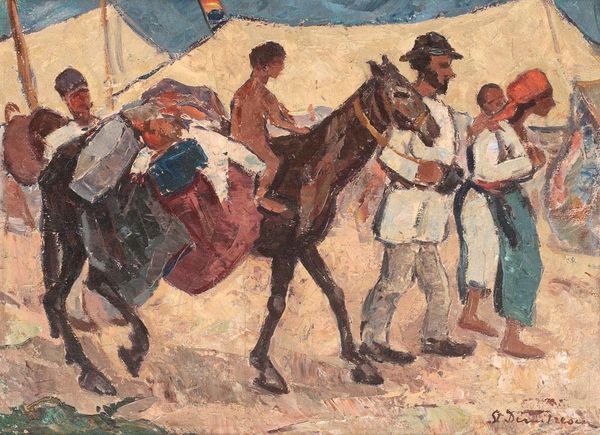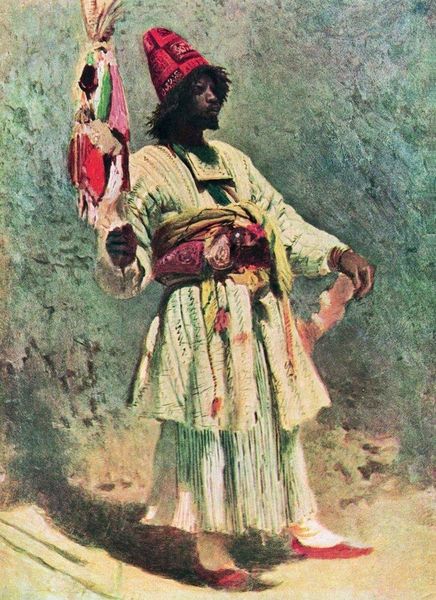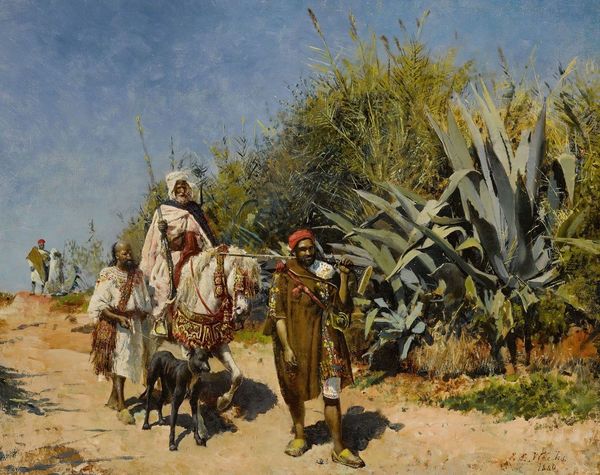
painting, oil-paint
#
portrait
#
painting
#
oil-paint
#
landscape
#
charcoal drawing
#
oil painting
#
male-portraits
#
orientalism
#
realism
Copyright: Public domain
Vasily Vereshchagin, a Russian artist, painted "The Rider in Jaipur," likely in the late 19th century. This work offers us a glimpse into a specific colonial encounter. Vereshchagin was known for his orientalist depictions of military campaigns and foreign lands, and here we see a Rajasthani rider, resplendent in traditional attire, his horse adorned with decorative trappings. But what does it mean to have this scene filtered through the eyes of a Russian artist, working in a period of intense European colonial expansion into Asia? Consider the choices Vereshchagin made. The detail given to the rider's garments and the horse's ornamentation might speak to a European fascination with exotic cultures. Yet the overall composition—a static, posed figure—hints at a detached, observational stance. To truly understand this painting, we need to consider the history of orientalism, the dynamics of cultural exchange, and the power relations inherent in the colonial context. These are all things that are uncovered through social and institutional research. The meaning of this artwork is thus contingent on social and institutional context.
Comments
No comments
Be the first to comment and join the conversation on the ultimate creative platform.
